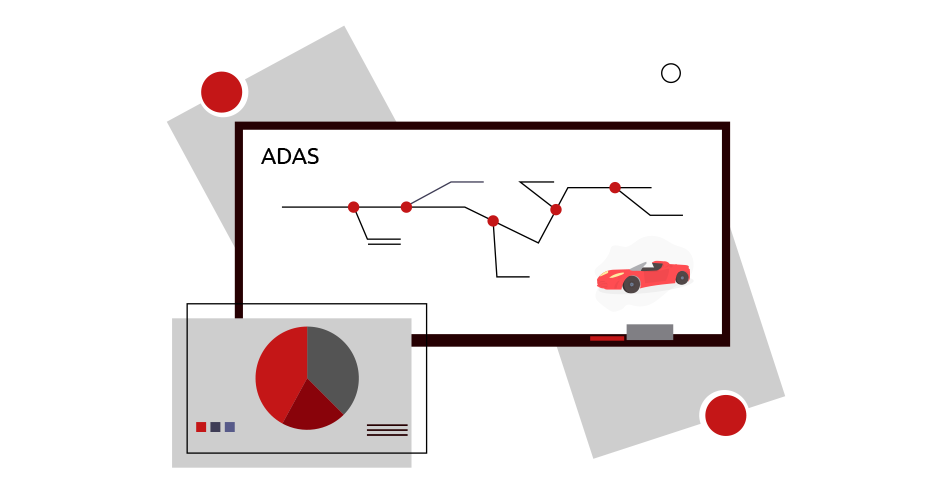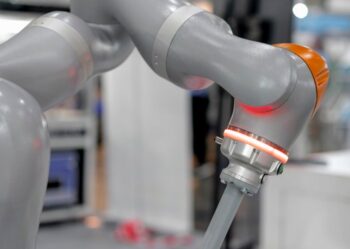How ADAS is making autonomous driving a reality

Self-driving cars are no longer a dream. Anyone who has recently visited a car show has seen or even sat in an autonomous vehicle. Be it Tesla, Peugeot, Renault, or even Rolls-Royce, all major car manufacturers are currently working on this technology.
However, despite their fancy and futuristic look, driverless cars always raise the same crucial question: How safe are they?
What are Advanced Driver Assistance Systems?
Advanced Driver Assistance Systems (ADAS) is the most important technology for self-driving cars and, as a result, has become one of the fastest-growing automotive electronics segments. An ADAS is a combination of electric systems that are focused on automating and improving all of the vehicle’s other systems to ensure better, safer driving.
ADAS is a mix of 12 technologies that primarily work with help from three types of sensors: RADAR, LiDAR, and CAMERA. These technologies can be divided into three main groups based on their functionalities: Sensing & Analysing, Deciding, and Controlling. The Sensing & Analysing group includes high-tech products like multi-cameras, radars, and connectivity applications. The Deciding group covers cognitive systems (AI) and sensor fusion. Finally, the Controlling group is related to everything around the automotive security gateway, including driving (powertrain), braking and chassis (safety), and steering (EPS).
Why do we need Advanced Driver Assistance Systems?
Relying on inputs from multiple sources, sources that not only include in-car networking but also external data from radars and other cars, Advanced Driver Assistance Systems can significantly improve on-road safety, reducing the number of accidents and collisions. For example, research in the UK found that ESP (Electronic Stability Program) equipped vehicles are 25% less likely to be involved in a fatal crash than those without the technology.
Moreover, Advanced Driver Assistance Systems make driving more convenient with features like parking assistance and cruise control. For instance, a backup camera, an ADAS technology that is already widely in use, makes parallel parking a whole lot easier.
ADAS History
The development of ADAS didn’t start yesterday or even within the last year. Its origin dates as far back as 1948, when the first modern cruise control was invented. Between the 1950s and 2000s, OEMs have been primarily working on further developing cruise control systems, introducing the electronic and laser-based versions.
Later on, the first driverless cars began to appear. The Google Car in 2010 and Mercedes’ “Bertha” in 2013 were amongst the first. Now, dozens of cars with vehicle-to-vehicle and vehicle-to-infrastructure communications have been launched all over the world.
It’s hard to say if or when self-driving cars will become common. However, in order for this dream to come true, states and international organisations need to define universal regulations for autonomous driving.

Disrupting the Automotive Industry
The development of new forms of mobility, like autonomous driving, have resulted in the disruption of the automotive industry. The market structure as we know it today, where OEMs compete with one another and source components from well-established suppliers, is now disappearing. New players, such as mobility providers, tech giants (like Google, Dyson, Apple), and emerging OEMs (TESLA, BYD) are overtaking traditional OEMs in this increasingly complex market.
Nowadays, OEMs are fighting to find reliable, agile suppliers for their Advanced Driver Assistance Systems. New partnerships between manufacturers and software providers alongside numerous start-up acquisitions by traditional OEMs over the past few years provide evidence of the auto industry’s remodelling.
Conclusion
For conventional car manufacturers with their sights set on fully autonomous driving (AD), Advanced Driver Assistance Systems are paving the way to make it a reality. In order to keep up with emerging competition from tech giants and further develop this technology, OEMs are looking for new suppliers and partners that were previously outside of their usual scope, creating a brand new ecosystem.
Ready to learn more? Get Our Complete Study on ADAS!
Our study “Advanced Driver Assistance Systems: Roadmaps & Opportunities Review” was developed by the SNECI’s Strategy & Market Study team to introduce managers and leaders in automotive to the new trends in autonomous driving.
The complete study includes various insights on ADAS functionalities, components, and suppliers as well as OEMs roadmaps and recommendations for the market players. We also provide a list of other publications for further reading.
- Introduction: Definition, Levels of Automation, History, Facts & Figures + SWOT, Technologies, Regulatory Framework
- OEMs roadmaps: PSA Group, Renault Nissan Mitsubishi Alliance, Volkswagen Group, Geely Group, BMW Group, Daimler
- Components & Suppliers
- Recommendations & Conclusions








